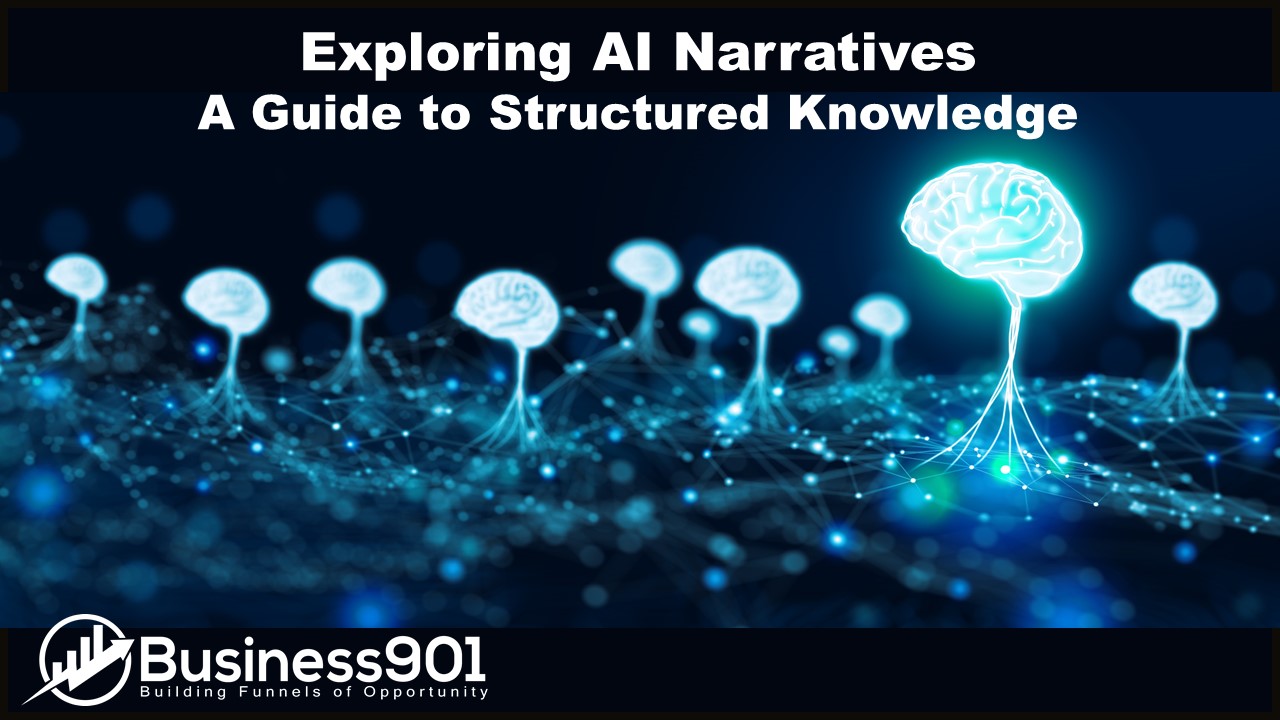Artificial Intelligence (AI) has revolutionized how we think about knowledge transfer. AI narratives are an important tool for understanding and structuring our knowledge. This article will provide a comprehensive guide to AI narratives and an in-depth look at how AI can be used to create structured knowledge transfer systems. From understanding the fundamentals of AI narrative structure to learning about the various techniques used to build and manipulate AI narratives, this guide will offer valuable insight into the powerful potential of AI. By exploring AI narratives, you will understand how knowledge can be quickly and effectively transferred. This article will provide a comprehensive overview of the AI narrative structure and the techniques used to build and manage AI narratives. With this information, you can apply AI to your knowledge transfers and create a more efficient and productive system.
Understanding the AI Narrative Structure
An AI narrative is a system of narrative logic that uses a story structure to convey information. Narrative logic is an algorithm that uses a story structure to convey information. This narrative structure can be interpreted and understood by humans, who will then be able to apply the information using a story format. AI narratives transform existing data into story format and present data in a narrative format. This process presents information in a way that is easy for humans to understand and apply. An AI narrative typically follows a three-step process:
- Data collection and preparation: The data is collected and prepared for the narrative.
- Data analysis: The data is analyzed for relationships and patterns.
- Narrative creation: The data analysis and relationships are turned into a narrative structure.
Techniques Used to Build and Manipulate AI Narratives
There are several techniques used to build and manipulate AI narratives. Each technique can build, shape, or manipulate a narrative. Additionally, different types of narrative structures are used to build AI narratives. These narrative structures can create and sequence narrative elements such as characters, plot, and setting. Narrative structures are important because they provide the basis for AI narratives and allow you to modify and manipulate the narrative through code. Many narrative structures can be used to build AI narratives, including:
- Plot Graph is a graph that uses nodes to represent events and lines to represent the relationships between these events.
- Plot Network is a graph that combines nodes, edges, and weights.
- Scene Graph represent the story in terms of characters, objects, and their relationships.
- Storyboards are a flowchart used to visualize and sequence a narrative or process.
Applications of AI Narratives
Artificial intelligence narratives are a powerful tool for knowledge transfer. They can be used across many different industries and applications. Some of the most common applications of AI narratives include:
- Storytelling: AI narratives are a great way to provide context and meaning to large amounts of data.
- Visualization: AI narratives can be used to create visual representations of data.
- Knowledge Management: AI narratives can be used to store and organize information.
- Data Analysis and Interpretation: AI narratives can identify patterns and relationships in data.
- Textual Reasoning: AI narratives can search through text and find relevant information and data.
Benefits of AI Narratives for Knowledge Transfer
- AI narratives provide a structured and easy-to-follow story that can be used to communicate knowledge and data.
- AI narratives allow you to structure information in a way that is easy to understand and apply.
- AI narratives provide an easy way to visualize data and patterns in data.
- AI narratives make it easy to sequence and structure information for communication.
- AI narratives are useful for communicating large amounts of data.
- AI narratives are useful for communicating complex data in an easy-to-follow format.
- AI narratives are useful for communicating information to different audiences.
- AI narratives are useful for communicating information across different modalities.
AI Narratives and Machine Learning
Artificial Intelligence narratives are a great way to organize and structure data for machine learning. Understanding the narrative structure and how to create, manipulate, and manage narratives is important before using AI for machine learning. Once you understand the narrative structure, you can use narrative-driven machine learning to organize data. Narrative-driven machine learning uses the narrative structure to organize data into separate units called features. These features are then fed into the machine learning algorithm. The narrative structure can also create new narratives by combining existing ones. This process is useful for creating training data for machine learning.
AI Narratives in the Real World
Artificial intelligence narratives are widely used across many different industries and applications. For example, AI narratives manage large amounts of data and organize information for healthcare organizations and medical researchers. AI narratives are also used in financial and insurance industries to analyze large amounts of data and predict risk. AI narratives can be used to store large amounts of information, and they can be used to visualize and sequence data for communication. Furthermore, AI narratives can create meaningful stories from data and provide context and meaning to information. AI narratives are also used to create training data for machine learning.
Conclusion: Exploring AI Narratives for Structured Knowledge Transfer
Artificial intelligence narratives are a powerful tool for knowledge transfer. They can be used across many different industries and applications. AI narratives are useful for communicating large amounts of data and complex data in an easy-to-follow format. AI narratives are structured and easy-to-follow stories that can be used to communicate knowledge and data. These AI narratives make it easy to sequence and structure information for communication.
Works Cited:
Erlach, Christine, and Michael Müller. Narrative Organizations. Springer Nature, 2020.
Thier, Karin. Storytelling in Organizations. Springer, 2018.

